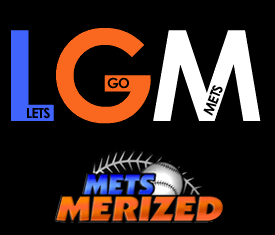
Wilson Ramos is now a Met. After touring the east coast to an extent that would make Kelly Johnson jealous, the hard-hitting catcher has found his way into the Big Apple as the Mets’ newest signing in a torrid offseason. There’s no reason to say that Ramos doesn’t represent a significant upgrade to the lineup (Ramos has hit .298/.343/.486 in the past three seasons) or that he tangibly improves the Mets against LHP (Ramos has hit .301/.346/.479 in his career against LHP; the Mets hit just .224/.300/.349 against LHP in 2018). But compared to the other options at catcher that the Mets explored, Ramos registered as a clearly inferior defensive option. Comparisons to other players can be misleading – so just how good or bad behind the plate is Ramos?
Pitch Framing
Pitch framing, for the unacquainted, is the art of stealing strikes. I’ll link to the same video I did last time, showing Yadier Molina framing an Adam Wainwright curveball – the pitch, while obviously below the knees of Yasiel Puig to the camera, is called a strike by the umpire who is fooled by Molina’s smooth motion in catching the pitch.
This is a tremendously valuable skill! Most systems peg excellent pitch framers as providing upwards of three additional wins of value with framing. How does Ramos fare?
A brute-force measure of pitch framing that I have used in the past looks at stolen strikes and lost strikes (pitches that were in the zone but were called a “ball” by the umpire), then looks at the differential – the net “stolen strikes” measure. By this metric, in 2018 Ramos recorded a +56 stolen strike differential, good enough for 32nd in the majors out of 117 MLB catchers, and a +162 stolen strike differential since 2015, again 32nd among the field. While hardly spectacular, Ramos grades out as an above-average framer by this metric.
Baseball Prospectus measures pitch framing a little more elegantly – and even assigns run values to it – using a regressed probabilistic model, the gory mathematical details of which are described here. BP grades Ramos a bit more harshly – Ramos is at just 0.3 framing runs in 2018 (48th out of 117), though Ramos is at 18.1 framing runs since 2015, including a 10.7 run boost in 2016 after receiving Lasik laser eye surgery.
There is room for optimism, but at his worst, Ramos grades out as an average framer, which is no slight against him.
Stolen Base Prevention
Far more visible (if far less important, in terms of run prevention) is the role a catcher can play in stolen base prevention. Given some of the Mets’ starters woes with runners on base, could Ramos represent an improvement over the sloth-like Travis d’Arnaud?
The stat that jumps to mind immediately with regard to stolen base prevention for catchers is CS%, and Ramos looks above average by the metric – 31.62% of runners caught stealing, 14th among 40 qualified active catchers. But using CS% as a scouting statistic – that is, using it to project future performance – is problematic in that CS% ignores how slow a pitcher might be to the plate, or how fast a runner might be. Mets catchers grade poorly on CS% as the Mets staff as a whole is quite slow to the plate (especially Noah Syndergaard), and if you faced the Reds a lot, you’ll be punished unfairly by CS% for facing Billy Hamilton.
Statcast has a much better approach to this in that it actually registers catchers’ physical metrics in preventing stolen bases – that is, their exchange time (the time it takes to move the ball from the glove to your hand), pop-time (the total time taken from catching the pitch to the release of the throw – exchange time is a subset of this time), throwing speed, and others. Here’s how Ramos fared by Statcast in 2018 on 14 2nd-base SB attempts.
| Wilson Ramos | Rank (out of 108) | |
|---|---|---|
| Exchange Time (s) | 0.71 | 29th |
| Pop Time (s) | 1.99 | 35th |
| Throwing Speed (MPH) | 82.3 | 35th |
Ramos still grades out at around the same place he did for SB% and for framing – average to above average. There’s some room for degradation as Ramos is getting older, but he’s otherwise fine in terms of stolen base prevention and should fare about as well as if not better than, say, Devin Mesoraco (0.75 exchange time, 2.03 pop time, 82.5 MPH arm).
Wild Pitches and Passed Balls
The last important piece of catcher defense that we can evaluate is how effectively catchers manage errant pitches – that is it to say, preventing wild pitches and passed balls. Again, simply counting the number of each event that occurs for catchers is misleading – J.T. Realmuto, as good of a defensive catcher as he may be, will run a disproportionately higher number of each than he might on a more experienced staff than that of the Marlins.
Baseball Prospectus adjusts these values based on situational factors (i.e. how wild a give pitcher is) and converts them to run values, so we can discuss Ramos in these terms. Per Baseball Prospectus, Ramos was worth -0.1 blocking runs in 2018 and has been worth -2.4 runs since 2015. Blocking runs are generally quite low values (again – the best framers are worth upwards of 30 runs in a season, whereas the best pitch blockers are worth upwards of 3 runs), and while Ramos is average-to-below average, it’s not a significant slight against his profile.
In short, Ramos projects an essentially average defensive catcher. He doesn’t need to be much more to be valuable – his bat does plenty of talking – but at the very least, Ramos is a stable, capable defender at the position with some diminished upside.















